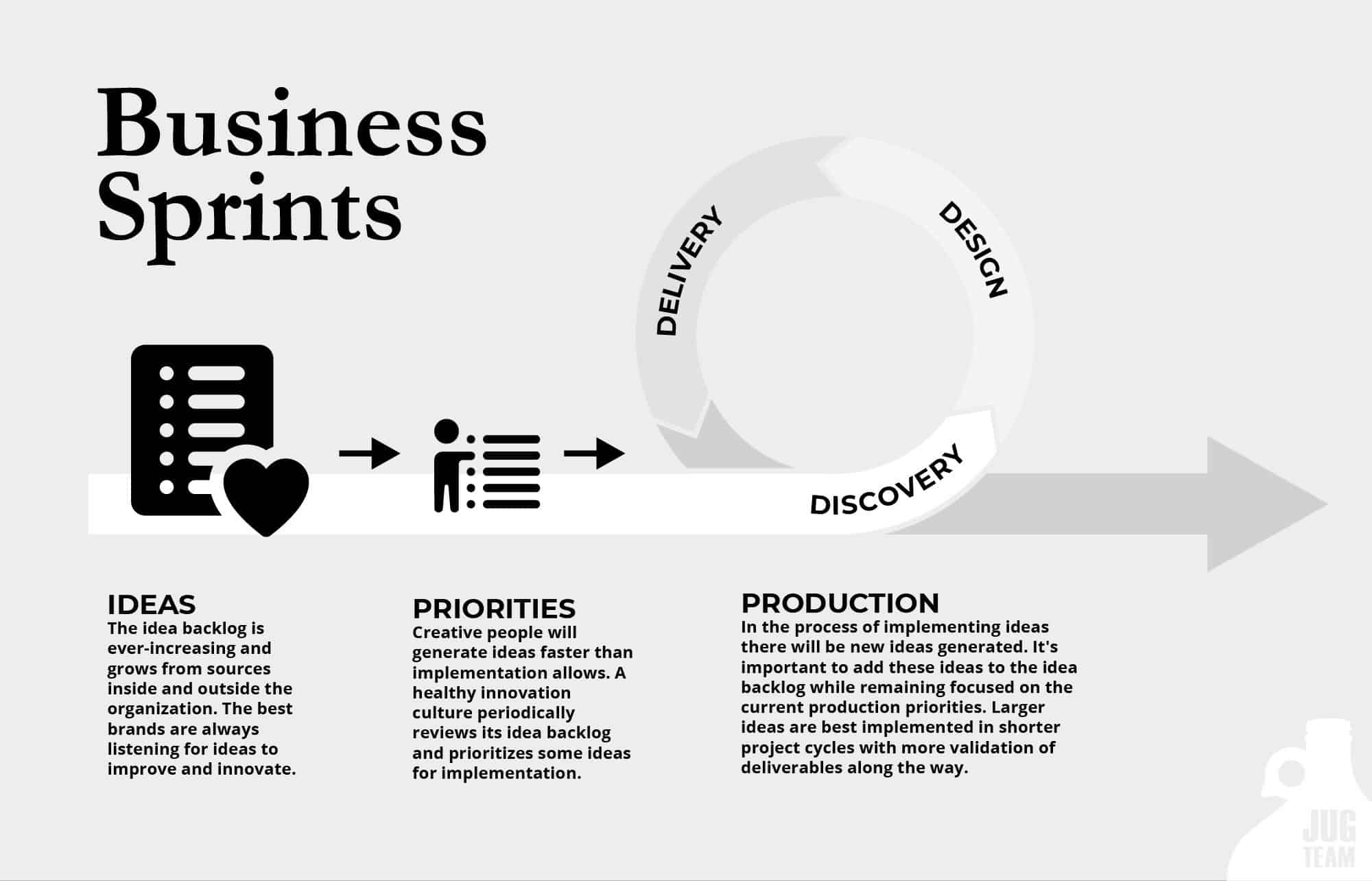Innovation Culture
Most organizations are brimming with ideas. For instance, ideas to improve customer experiences, reduce costs, increase revenue, win new customers, reposition brands, and expand products, services, and channels. Unsurprisingly, employees have ideas about improving everything large and small that touches the organization. A healthy innovation culture is able to capture these ideas and methodically transform them into results. However, that practice, sadly, remains a mystery to most organizations. As a result, the business graveyard is littered with the corpses of companies large and small who failed to keep innovating. This article reviews 50 well-known brands that failed to innovate.
Thought Experiment
Think about how many ideas are floating around in your organization. Let’s say it’s 100 ideas. It’s probably a much higher number. Where are those ideas captured? Out of the 100 ideas, which ones are good? Would others agree? Will the good ideas receive favorable treatment? Out of the 100 ideas how many do you think will be implemented? It seems so simple, but you don’t know these answers. Neither does anybody else.
Borrow This Idea From Us
Here is a simple practice you can start immediately in your organization to improve your innovation culture. We call it the Business Sprint. You can start Business Sprints in one department or across the entire organization. The general idea is you capture ideas, objectively prioritize them, and then empower teams to implement those prioritized ideas over short intervals called sprints. The key to shorter cycles is to gain feedback sooner. Also, these shorter cycles empower organizations to be responsive to shifting business priorities. After each Business Sprint is completed, a best practice is to reflect on needed improvements that can be tried during the next sprint period.
Use Business Sprints To:
- Test an idea for value
- Deliver impactful results
- Launch a new product or service
- Launch a new or revitalized brand
- Improve quality
- Increase employee engagement
- Develop a product or service
- Improve your innovation culture
- Gain a competitive advantage
- Move faster than the competition
Ideas
Every success, solution, innovation, cure, and improvement in people’s lives, began as an idea. Healthy innovation cultures never stop generating ideas. Part of the excitement of generating ideas is that you might have a good one. For business leaders a good practice is to encourage brainstorming and spark a conversation about when to capture ideas and where to store them. A specific request could be your challenge for teams to capture ideas generated from outside the organization including from social media channels and from customers and partners. After you have the ideas, then you can worry about which ones to pursue.
Priorities
Hopefully you get to experience having too many ideas. After that, you’ll need to prioritize. Remember, the practice of prioritization is to start with a larger set of options and end up with a smaller set. One method we like to use is a simple 2×2 matrix. The reason for this is that when teams agree on two simple decision criteria, complex decisions become easier to make. Your 2×2 matrix could be cost vs. benefit or important vs. urgent or the one we prefer, effort required vs. expected impact. After all options being considered are ranked using the same criteria, then the winning priorities become evident. In summary, a 2×2 matrix simplifies decision making, encourages discussion, and helps get buy-in and perspective from others.
Production
The production phase of a Business Sprint is limited in scope and duration. The reason for this is to keep the team focused on producing the deliverables that the team agreed to without becoming endlessly distracted. Also, with shorter sprint periods the team gets feedback sooner and corrects any problems earlier. Because of this, teams are more empowered and engaged. In the event there is a large complex project, it can be divided into smaller projects that get completed across multiple business sprints. It is worth noting, shorter sprint periods create an advantage for agile organizations that can shift business priorities as needed when technology, competition, and the business landscape changes. After all, you don’t want to join that business graveyard mentioned at the start.
Business Sprint Basics
- Deliver value faster
- Work in shorter cycles
- Look for opportunities to improve
- Make business objectives visible
- Create empowered teams
- Capture ideas in backlog
- Prioritize actions and deliverables
- Gain feedback more often
- Adapt to changing conditions
- Increase organizational agility
Improve Your Innovation Culture
Start by adopting Business Sprints Today. An easy first step is to sign up for the JUG Team Lightning Letter to receive more content like this post about Innovation Culture and Business Sprints.




